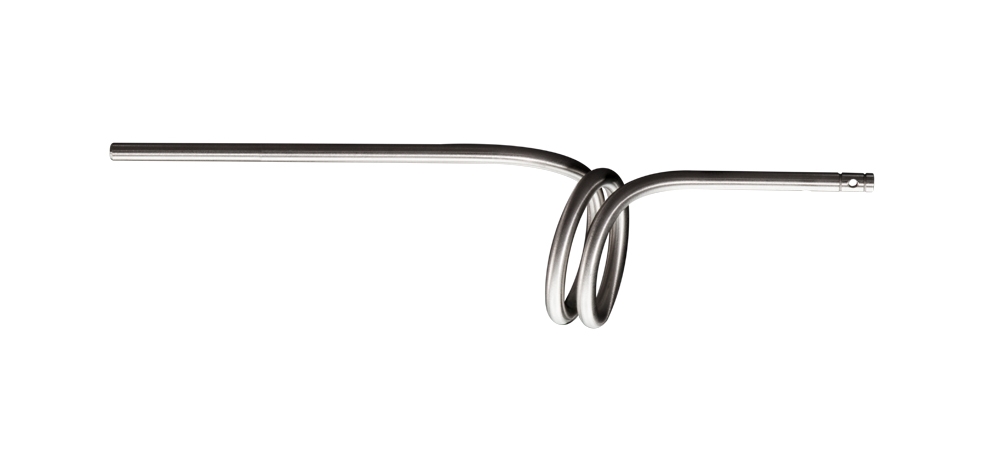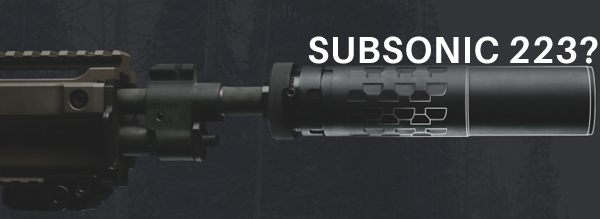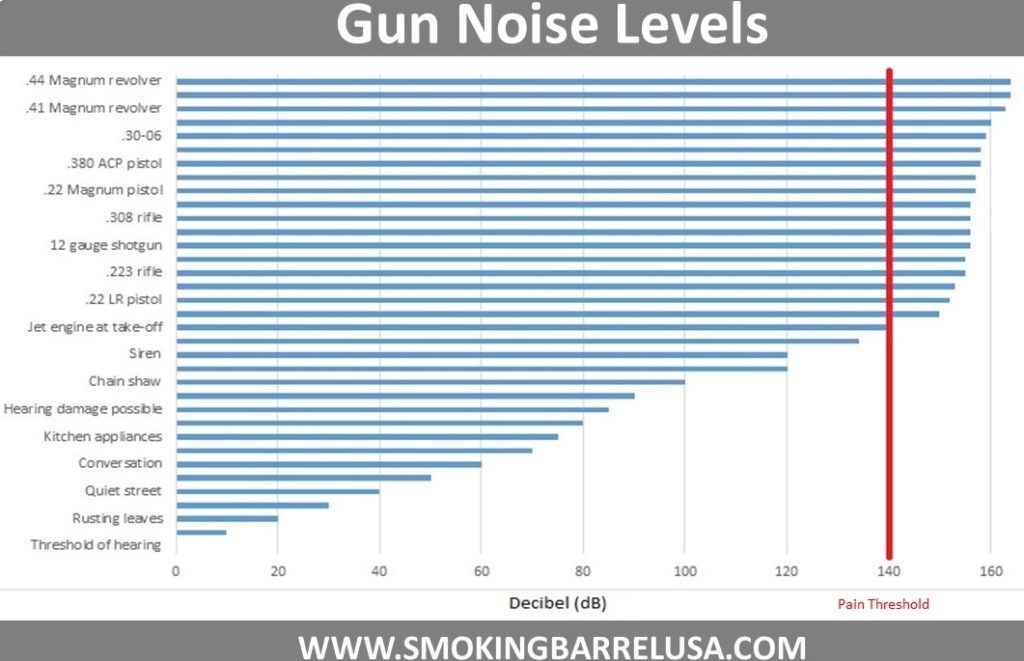I occasionally see requests for .223 subsonic ammunition. Like many things ammo, there are almost as many opinions as there are varieties of ammo and the ammo that is apparently out there in the market is vaporware. The requests for subsonic .223 or 5.56 ammo often comes from the NFA community—those shooters and collectors who are using a suppressor (although the term silencer is even used in the industry, it’s an inaccurate term for what it does) and are looking for that much more of an edge to be even quieter. It’s a segment of the shooting community that talks in dB (decibels) and how much average noise reduction they’re achieving. A typical “can” (slang for suppressor) may have a 32 dB rating (maybe even 38 or more if it has a wet rating as well, where the suppressor/silencer is designed to be oiled before shooting). While we may only be talking 2-3 dB improvement changing from supersonic to subsonic ammo, remember that the decibel scale is logarithmic, so every 3 dB change represents doubling or halving the energy of the reference.
With a typical 16-inch barreled AR-15/M16 delivering a 167 dB sound pressure level at the muzzle (depending on environmental conditions) with M193 55-gr FMJBT round, we are already exceeding the 140 dB impact noise threshold for hearing conservation. A good suppressor can get that down to 135 dB, below the impact noise threshold the Navy beat into my head years ago from NAVOSH 5100.19. Where subsonic ammo comes into play is taking this down even more and getting rid of the secondary supersonic crack from the bullet. Reducing noise is good for yourself and makes good neighbors, thus the impetus of the Hearing Protection Act and why suppressors are in common use and readily available to shooters in Europe.

The first question you need to answer about subsonic .223 ammo (or any subsonic rifle ammo in general) is what you will be shooting it out of. A bolt-action rifle is manually cycled and doesn’t have a minimum pressure threshold necessary to reliably cycle the action that a semi-auto or full-auto does. A good example of this is with .300 AAC Blackout (.300 Blk / .300 Whisper)—we sometimes see AR-15 platform guns built with pistol-length gas systems to try to address subsonic loads that will not have sufficient power/pressure in a carbine-length gas tube to cycle the action. The shorter gas tube is closer to the chamber and will have higher pressure to allow it to be sufficient enough to cycle the bolt. Where there must be caution in the engineering and design is when the bolt unlocking takes place. With peak chamber pressure in excess of 50,000 psi, the timing of the bolt unlocking must happen when pressure levels are safe enough to open the bolt without destroying the weapon or even worse, injuring the shooter or someone else near the shooter. If it’s semi-auto or automatic, then you need the pressure to cycle. In pistol-length gas-tubes and rounds loaded with pistol powders, this may be achieved with rounds as low as 20,000 psi chamber pressure. With rifle powders which burn slower and essentially reach a higher peak pressure then hold the pressure curve for a longer period of time (or distance traveled in the barrel), you will generally get sufficient pressure in a longer gas-tube length, but with supersonic bullet velocities. In playing the pressure game, a heavier bullet may allow lower velocities. With the speed of sound being 1125 fps at 68 degrees F at sea level, and M193 running around 3100 fps, you can see that we have a long way to go to bring the velocity down. Unfortunately with .223, there isn’t a lot of selection for heavy bullets. You may find match bullets like JLK and others that are 80-gr, 90-gr and even 100-gr VLD (Very Low Drag) bullets. I have even heard of the mythical beast called the 127-gr, but alas, it appears to be like most things Kel-Tec, it is vaporware.
With the .224 Valkyrie round on the streets, I see a lot of potential for subsonic .223 shooters in the future in form of heavier bullets. Where Valkyrie shooters want the heavier weights for better sectional density and wind-cheating for long-range shooting, .223 Remington / 5.56x45mm / .223 Wylde subsonic shooters could stand to benefit from heavier bullet weights that can drive velocities down while keeping energy up enough to cycle. Heavier bullets will however create their own challenges in being able to stay within the maximum overall length (max OAL) of 2.260”—a semi-auto would be nice if you could actually fit more than one round in the magazine! The heavier bullets also create another challenge that is near and dear to the heart of any suppressor owner—bullet stability. The last thing any suppressor shooter wants it to have a bullet that costs about a dollar go key-holing through a very expensive suppressor, striking every baffle along the way and causing damage outside of what any factory warranty would honor. It would make for a very expensive and ineffective shotgun. The GI M4 carbine twist rate is 1:7 to stabilize the 62-gr M855/SS109 round. 1:7 will effectively stabilize even 75 and 77 grain bullets and most 80 grain bullets. Once we hit the 90-gr and above realm, we’re now looking at barrels that will need 1:6 to stabilize (especially with slower moving subsonic bullets). We are in the realm of expensive custom barrels that may burn out quickly with fast and hot loads, but no one ever said shooting was a cheap hobby.
While the next generation subsonic bullet for .223 in an AR platform hasn’t been born yet (and I expect it will be a few years before it is), I imagine it will leverage off of the experience gained in loads developed for .300 BLK from great and versatile powders like Hodgdon’s CFE BLK and the next generation of heavy bullets for .224 Valkyrie. I imagine the bullets will be deep seated, which solves a little of the volume issue from having such a low weight powder charge and will ultimately take the form of a .223 with a bullet around 125-130 grains, getting pushed out of a 16-inch barrel around 1100 fps at 340 ft-lbs (I know it sounds a lot like a 9mm NATO), possibly even a compressed load, and possibly with a pistol-length gas tube and a chamber pressure hitting about 24,000 psi or less. The trajectory will be terrible, but it will certainly be pleasant on the ears.


Looking for a subsonic bullet for my Browning.223 with a 22″barrel, 1-8 twist!
Any recommendations? Using a Recce 5 can.
Thanks in advance!
Try Beck Ammunition or Detroit Ammunition. They both produce hard hitting .223 rounds that are devastating to small animals inside 75 yards. After that the bullet drop is pretty severe. Whisper quiet, though.
Will the beck cycle in an AR? I know the atomic will not.
Atomic Hunting Ammunition 223 Remington 112 Grain Expanding Round Nose Soft Point
The problem isn’t getting 5.56 down to subsonic, it’s using it to start with, if you knowingly want to run a silencer (invented by Browning and that’s what he called it so STFU) from the start then you’d better use the suggested uppers and switch to .300 something, blackout or AAC and so on, because you’d spend ten times the money attempting to run any other system halfway reliable and accurate, popular stuff sometimes is popular for good reason…
Daniel, Browning didn’t invent the silencer. Hiram Percy Maxim did.
The “STFU” definately uncool dude! But nice to know the origin of the name “silencer”, if of course that’s true (don’t know myself).
Actually it wasn’t browning, it was Maxim. Same dude who invented the car muffler
Wow, “stfu”. Harsh language coming from someone who forgot Hiram Maxim invented the silencer and who also doesn’t seem to understand that suppressor owners only correct people on the correct term of the “can” because the word “silencer” infers that the result is silence where as a “silencer” only suppresses the sound of the shot. It’s actually still quite loud. Please mind your manners and try to know what you’re talking about.